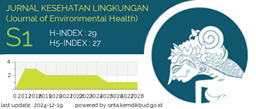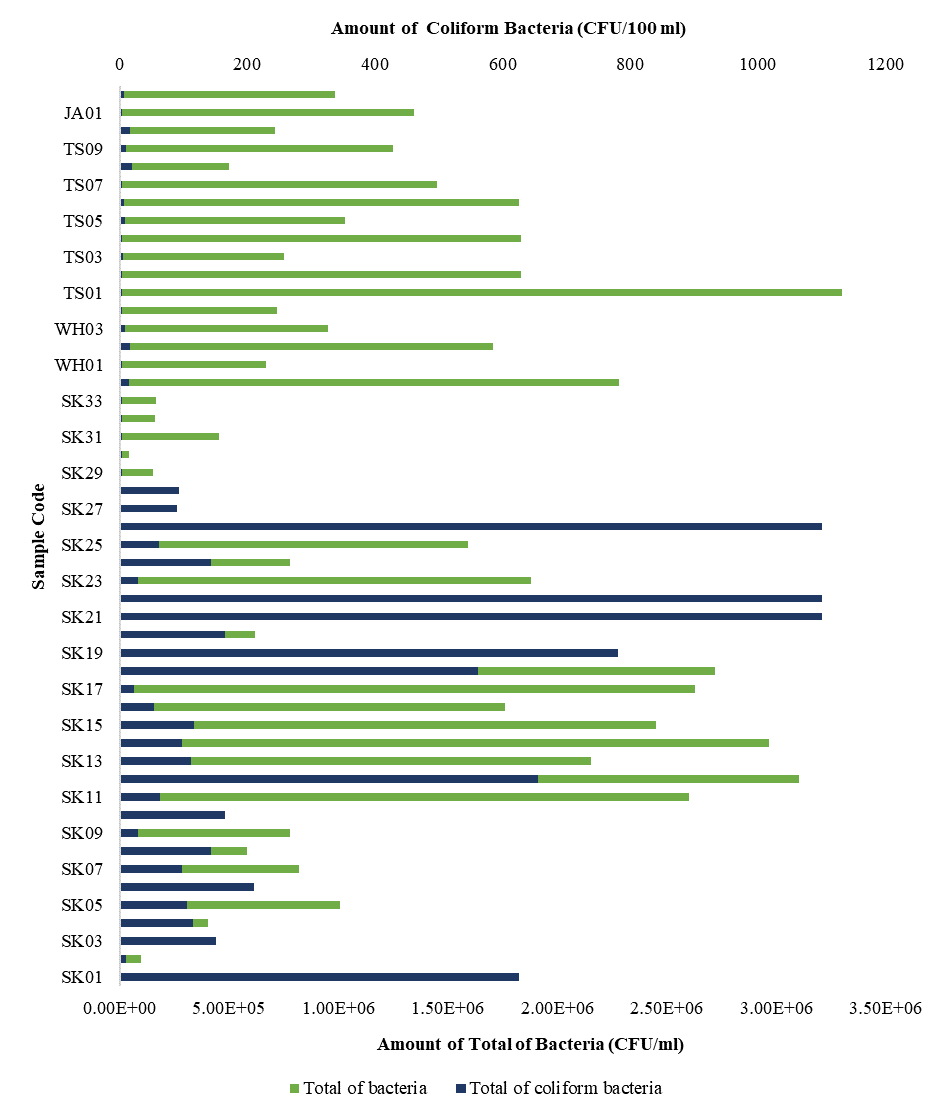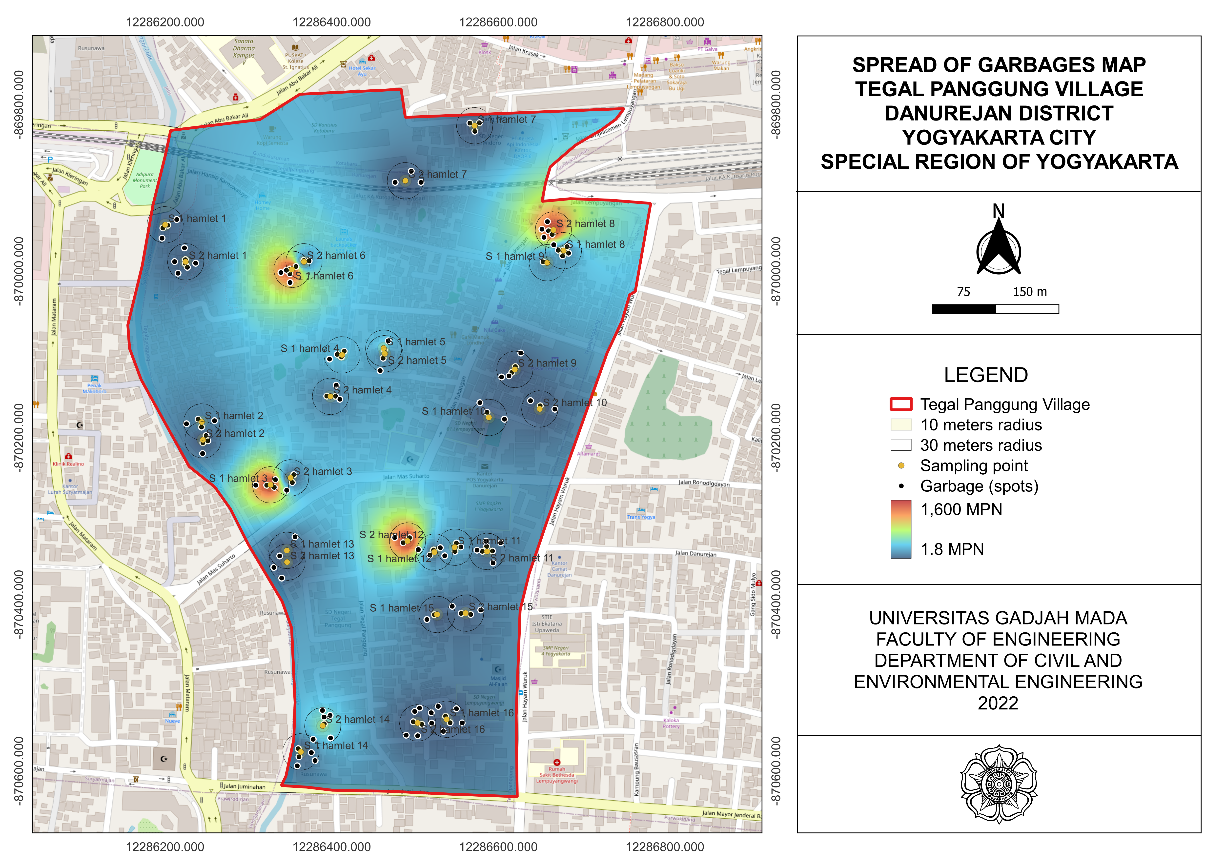Analysis of Potential Waste-to-Energy Plant in Final Waste Disposal Sites in Indonesia Towards SDGs 2030 (A Literature Review)
Downloads
Setiadi A. Studi Pengelolaan Sampah Berbasis Komunitas pada Kawasan Kampung Perkotaan di Yogyakarta. Jurnal Wilayah dan Lingkungan. 2015;3(1):27–38. https://doi.org/10.14710/ jwl.3.1.27-38
Central Statistic Agency of Indonesia. Statistik Indonesia 2019. Jakarta: Central Statistic Agency of Indonesia; 2019. https://www.bps.go.id/
Roswulandari A, Daerobi A, Suryanto, Gravitiani E. Waste to Energy (WTE) Putri Cempo As Urban Innovation: A Financial Analysis. In: 18th International Conference on Sustainable Environment and Architecture (SENVAR 2018). 2019;2(1):171–174. https://doi.org/10.2991/senvar18.2019.25
Keni, Agung. Model Rancangan Aplikasi Retribusi Sampah di Kota Bandung. In: Conference on Management and Behavioral Studies Universitas Tarumanegara Tahun 2018. 2018;1(1):307–314. http://cmbs.untar.ac.id/images/ prosiding/2018/050_CMBS2018_Keni-Agung.pdf
Allo SL, Widjasena H. Studi Potensi Pembangkit Listrik Tenaga Sampah (PLTSa) pada Tempat Pembuangan Akhir (TPA) Makbon Kota Sorong. Electro Luceat. 2019;5(2):14–24. https://doi. org/10.32531/jelekn.v5i2.150
Olivier JGJ, Peters JAHW. Trends in Global CO2 and Total Greenhouse Gas Emissions: Report 2019. Netherlands: PBL Netherlands Environmental Assessment Agency; 2020. https://www.pbl.nl/sites
Dewi PDP, Suarna IW, Budiarsa Suyasa IW. Potensi Energi Listrik yang Dihasilkan dari Emisi Gas Metana di TPA Suwung Provinsi Bali. ECOTROPHIC. 2017;11(2):132–139. https://doi. org/10.24843/EJES.2017.v11.i02.p04
Monice, Perinov. Analisis Potensi Sampah Sebagai Bahan Baku Pembangkit Listrik Tenaga Sampah (PLTSa) di Pekanbaru. SainETIn. 2016;1(1):9–16. https://doi.org/10.31849/sainetin.v1i1.166
Adistia NA, Nurdiansyah RA, Fariko J, Vincent, Simatupang JW. Potensi Energi Panas Bumi, Angin, dan Biomassa Menjadi Energi Listrik di Indonesia. Tesla. 2020;22(2):105–116. https:// dx.doi.org/10.24912/tesla.v22i2.9107
Thohiroh NA, Mardiati R. Desain Pembangkit Listrik Tenaga Sampah (PLTSa) Menggunakan Teknologi Pembakaran yang Fisibel Studi Kasus TPST Bantargebang. In: Senter 2017. 2018;1(1):212– 224. https://senter.ee.uinsgd.ac.id/repositori/index. php/prosiding/article/view/senter2017p24
Miefthawati NP, Afriani S, Saputra G. Perancangan Pembangkit Listrik Tenaga Sampah di Kota Pekanbaru Design of Municipal Solid Wasteto-Energy Plant in Pekanbaru. In: Senter 2019. 2020;1(1):452–461. https://senter.ee.uinsgd. ac.id/repositori/index.php/prosiding/article/view/ senter2019p50
Nurdiansah T, Purnomo EP, Kasiwi A. Implementasi Pembangkit Listrik Tenaga Sampah (PLTSa) sebagai Solusi Permasalahan Sampah Perkotaan; Studi Kasus di Kota Surabaya. Environtek. 2020;12(1):87–92. https://doi.org/10.33005/ envirotek.v12i1.47
Winanti WS. Teknologi Pembangkit Listrik Tenaga Sampah (PLTSa). In: Prosiding Seminar Nasional dan Konsultasi Teknologi Lingkungan Tahun 2018. 2018;1(1):65–72. https://enviro.bppt.go.id/
Widyawidura W, Pongoh JI. Potensi Waste to Energy Sampah Perkotaan untuk Kapasitas Pembangkit 1 MW di Propinsi DIY. Jurnal Mekanika dan Sistem Termal. 2016;1(1):21–25. http://ejournal.janabadra.ac.id/index.php/JMST/article/ view/WIRA
Samsinar R, Anwar K. Studi Perencanaan Pembangkit Listrik Tenaga Sampah Kapasitas 115 KW (Studi Kasus Kota Tegal). Jurnal Elektrum. 2018;15(2):33–40. https://doi.org/10.24853/ elektum.15.2.%25p
Faridha, Pirngadie B, Supriatna NK. Potensi Pemanfaatan Sampah Menjadi Listrik di TPA Cilowong Kota Serang Provinsi Banten. Ketenagalistrikan dan Energi Terbarukan. 2015;14(2):103–116. http://ketjurnal.p3tkebt.esdm. go.id/index.php/ket/article/view/46
Sudibyo H, Majid AI, Pradana YS, Budhijanto W, Deendarlianto, Budiman A. Technological Evaluation of Municipal Solid Waste Management System in Indonesia. Energy Procedia. 2017;105(1):263–269. https://doi.org/10.1016/j.egypro.2017.03.312
Mahyudin RP. Kajian Permasalahan Pengelolaan Sampah dan Dampak Lingkungan di TPA (Tempat Pemrosesan Akhir). Jukung Jurnal Teknik Lingkungan. 2017;3(1):66–74. https:// ppjp.ulm.ac.id/journal/index.php/jukung/article/ viewFile/3201/2745
Susanti EY. Analisis Faktor Penghambat Penerapan Kebijakan Sanitary Landfill di TPA Jatibarang Semarang Sesuai dengan Undang-undang No. 18 Tahun 2008 tentang Pengelolaan Sampah. Journal of Politic and Goverment Studies. 2016;5(3):1–10. https://ejournal3.undip.ac.id/index.php/jpgs/article/ view/12444
Saputra A. Analisis Teknis dan Ekonomi Pembangkit Listrik Tenaga Sampah (PLTSA) Teknologi Incinerator (Studi Kasus TPA Muaro Kiawai Kabupaten Pasaman Barat). Thesis. Pekanbaru: Universitas Islam Negeri Sultan Syarif Kasim Riau Pekanbaru; 2020. http://repository.uinsuska.ac.id/29951/
Wijaya WH. Pemodelan Pembangkit Listrik Tenaga Sampah (PLTSa) Berbasis Landfill Pretreatment dengan Menggunakan Generator HCCI (Studi Kasus : TPA Supit Urang Kota Malang. Thesis. Surabaya: Institut Teknologi Sepuluh Nopember; 2016.
Musyafiq AA, Zarory H, Prasteia V. Pemilihan Teknologi PLTSa di Kota Yogyakarta (Studi Kasus: TPA Piyungan Yogyakarta). Jurnal POLEKTRO. 2019;8(2):1–4. http://dx.doi.org/10.30591/polektro. v8i2.1475
Putera PB, Hermawati W, Poerbosisworo IR. Kecenderungan Perkembangan Teknologi Gasifikasi Biomassa: Studi Perbandingan di Beberapa Negara. JSTI. 2015;17(3):113–126. https://doi.org/10.29122/jsti.v17i3.3434
Majidi SS, Kamalan H. Economic and Environmental Evaluation of Waste to Energy through Gasification; Case study : Tehran. Environmental Energy Economic Research. 2017;1(1):113–124. https:// doi.org/10.22097/eeer.2017.46461
Etutu TG, Laohalidanond K, Kerdsuwan S. Gasification of Municipal Solid Waste in a Downdraft Gasifier: Analysis of Tar Formation. Songklanakarin Journal of Science and Technology. 2016;38(2):221–228. https://doi.org/10.14456/sjstpsu.2016.30
Mustafa A, Calay RK, Mustafa MY. A TechnoEconomic Study of a Biomass Gasification Plant for the Production of Transport Biofuel for Small Communities. Energy Procedia. 2017;112(1):529– 536. https://doi.org/10.1016/j.egypro.2017.03.1111
Moya D, Aldás C, López G, Kaparaju P. Municipal Solid Waste as a Valuable Renewable Energy Resource: A Worldwide Opportunity of Energy Recovery by Using Waste to Energy Technologies. Energy Procedia. 2017;134(1):286–295. https://doi. org/10.1016/j.egypro.2017.09.618
Musyafiq AA, Cahyo BN. Pemilihan Teknologi Waste to Energy untuk Pembangkit Listrik Tenaga Sampah (Studi Kasus : TPA Mojorejo Kabupaten Sukoharjo Jawa Tengah). In: Prosiding SNST. 2018(1):13–18. https://publikasiilmiah.unwahas.ac.id/index.php/ PROSIDING_SNST_FT/article/view/2353
Dodi N, Syafii, Raharjo S. Studi Kajian Kelayakan Pembangunan Pembangkit Listrik Tenaga Sampah (PLTSA) Kota Padang (Studi Kajian di TPA Air Dingin Kota Padang). Jurnal Teknik Elektro ITP. 2015;4(2):24–33. https://ejournal.itp.ac.id/index. php/telektro/article/view/292/286
Sihite ASF. Studi Pengolahan Sampah untuk Bahan Bakar Pembangkit Listrik Tenaga Sampah Mini di Kawasan Medan Sunggal. Thesis. Medan: Universitas Sumatera Utara; 2018. https://repositori. usu.ac.id/handle/123456789/9629
Sahil J, Muhdar MHI, Rohman F, Syamsuri I. Sistem Pengelolaan dan Upaya Penanggulangan Sampah di Kelurahan Dufa-Dufa Kota Ternate. Jurnal BIOeduKASI. 2016;4(2):478–487. https://ejournal. unkhair.ac.id/index.php/bioedu/article/view/160
Andina E. Analisis Perilaku Pemilahan Sampah di Kota Surabaya. Jurnal Masalah-Masalah Sosial. 2019;10(2):119–138. http://jurnal.dpr.go.id/index. php/aspirasi/article/view/1424
Lokahita B, Samudro G, Huboyo HS, Aziz M, Takahashi F. Energy Recovery Potential from Excavating Municipal Solid Waste Dumpsite in Indonesia. Energy Procedia. 2019;158(1):243–248. https://doi.org/10.1016/j.egypro.2019.01.083
Prasetiyo AT, Notosoedjono D, Waryani. Studi Evaluasi Pembangkit Listrik Tenaga Sampah di Tempat Pengolahan Sampah Terpadu Bantargebang. Jurnal Online Mahasiswa Bidang Teknik Elektro. 2017;1(1):1–11. https://jom.unpak. ac.id/index.php/teknikelektro/article/view/1009
Surma U, Natio A, Harahap S, Firman LOM. Analisa Pemanfaatan Sampah Perkotaan untuk Pembangkit Listrik di TPA Ciniru Kabupaten Kuningan. Teknobiz. 2020;10(1):7–12. https://doi. org/10.35814/teknobiz.v10i1.1355
Nurhadi, Windarta J, Ginting D. Evaluasi Pemanfaatan Gas TPA Menjadi Listrik, Studi Kasus TPA Jatibarang Kota Semarang. Jurnal Energi Baru dan Terbarukan. 2020;1(1):19–25. https://doi. org/10.14710/jebt.2020.8134
Yulianasari AAS, Permanasuri NPD. Sampah Sebagai Pembangkit Listrik Alternatif dalam Upaya Pengembangan Infrastruktur Pusat Kota Lama Singaraja. Jurnal Anala. 2020;8(2):33–42. https://ejournal.undwi.ac.id/index.php/anala/article/ download/980/860/
Chabhadiya K, Ranjan SR, Pathak P. Growth Projections Against Set-target of Renewable Energy and Resultant Impact on Emissions Reduction in India. Environmental Engineering Research. 2020;26(2):1-11. https://doi.org/10.4491/ eer.2020.083
Nugraha CS, Darda AA, Hermawan WF. Pengelolaan Sampah Melalui Empowerment Masyarakat dengan Perencanaan Pembangkit Listrik Tenaga Sampah Teknik Thermal Converter di TPST Piyungan. Jurnal Ilmiah Penalaran dan Penelitian Mahasiswa. 2020;4(2):20–28. http:// jurnal.ukmpenelitianuny.org/index.php/jippm/ article/view/189
Huda T, Amor AP, Priyanto YTK. Studi Perencanaan Pembangkit Listrik Tenaga Sampah Pada TPA Sambutan Kota Samarinda. SPECTA Journal of Technology. 2019;3(2):18–26. https://doi. org/10.35718/specta.v3i2.109
Alimuddin, Tambunan AH, Machfud, Novianto A. Analisis Emisi CO2 Pembangkit Listrik Panas Bumi Ulubelu Lampung dan Kontribusinya Terhadap Pengembangan Pembangkit Listrik di Provinsi Lampung/Analysis of CO2 Emissions from Geothermal Power Plant Ulubelu and Its Contribution to Development of Electricity. Journal of Natural Resources and Environmental Management. 2019;9(2):287–304. https://doi. org/10.29244/jpsl.9.2.288-303
Parinduri L, Parinduri T. Konversi Biomassa Sebagai Sumber Energi Terbarukan. Journal of Electrical Technology. 2020;5(2):88–92. https://jurnal.uisu. ac.id/index.php/jet/article/view/2885/1918
Paladino O, Massabò M. Health Risk Assessment as an Approach to Manage an Old Landfill and to Propose Integrated Solid Waste Treatment: A Case Study in Italy. Waste Management. 2017;68(1):344– 354. https://doi.org/10.1016/j.wasman.2017.07.021
Li H, Nitivattananon V, Li P. Municipal Solid Waste Management Health Risk Assessment from Air Emissions for China by Applying Life Cycle Analysis. Waste Management Resources. 2015;33(5):401– 409. https://doi.org/10.1177/0734242X15580191
Tait PW, Brew J, Che A, Costanzo A, Danyluk A, Davis M, et al. The Health Impacts of Waste Incineration: A Systematic Review. Australian and New Zealand Journal of Public Health. 2020;44(1):40–48. https://doi.org/10.1111/1753- 6405.12939
Sepriona T, Nurhalim. Analisis Pembangunan Pembangkit Listrik Tenaga Sampah (PLTSa) Kota Pekanbaru Ditinjau dari Aspek Ekonomi Teknik. Jurnal Online Mahasiswa Fakultas Teknik. 2019;6(1):1–6. https://jom.unri.ac.id/index.php/ JOMFTEKNIK/article/view/22719
Asiaka FK. Estimasi Harga Jual Listrik dari Sampah Penduduk Kota Palangka Raya. J-SEA. 2019;14(2):1–11. https://e-journal.upr.ac.id/index. php/j-sea/article/view/475/426
Supriyadik. Analisis Potensi Daya Listrik Pembangkit Listrik Tenaga Sampah Kawasan TPA Putri Sempo Surakarta. Thesis. Surakarta: Universitas Muhammadiyah Surakarta, 2020.
2. Formal legal provisions to access digital articles of electronic journal are subject to the provision of the Creative Commons Attribution-ShareAlike license (CC BY-NC-SA), which means that Jurnal Kesehatan Lingkungan is rightful to keep, transfer media/format, manage in the form of databases, maintain, and publish articles.
3. Published manuscripts both printed and electronic are open access for educational, research, and library purposes. Additionally, the editorial board is not responsible for any violations of copyright law.
JKESLING by UNAIR is licensed under a Creative Commons Attribution-ShareAlike 4.0 International License.







































